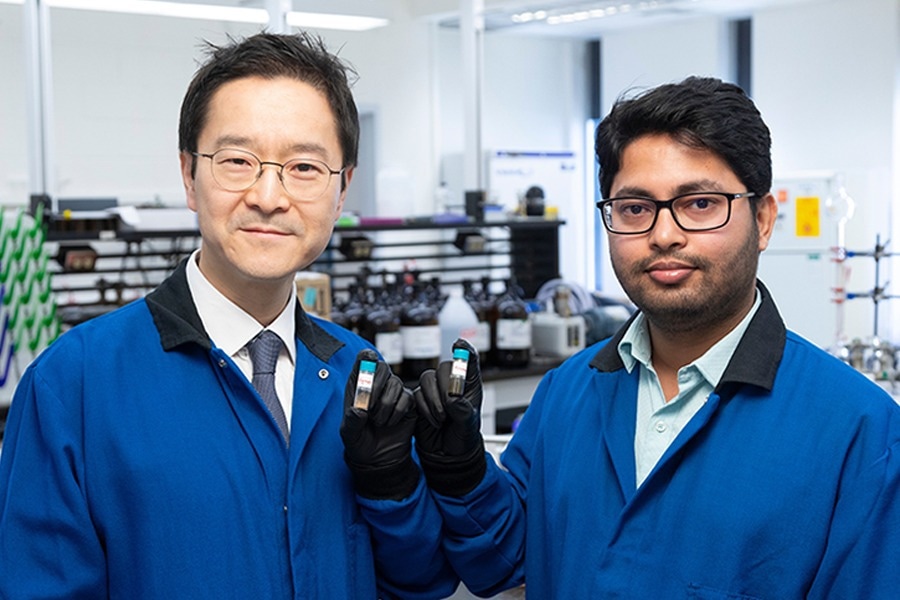Reviewed by Lexie CornerAug 27 2024
Researchers from Florida State University have created a novel biomass-based material that can continuously absorb and release carbon dioxide (CO2). The material's major constituent, lignin, is an organic molecule found in wood and other plants. It can absorb CO2 straight from the air or from concentrated sources. This research was published in the journal Advanced Materials.
 Hoyong Chung, an Associate Professor in the FAMU-FSU College of Engineering, and Postdoctoral Researcher Arijit Ghorai developed a new, biomass-based material that can be used to repeatedly capture and release carbon dioxide. Image Credit: Scott Holstein/FAMU-FSU College of Engineering.
Hoyong Chung, an Associate Professor in the FAMU-FSU College of Engineering, and Postdoctoral Researcher Arijit Ghorai developed a new, biomass-based material that can be used to repeatedly capture and release carbon dioxide. Image Credit: Scott Holstein/FAMU-FSU College of Engineering.
The beauty of this work is the ability to precisely control the capture and release of CO2 without high pressure or extreme temperatures. Our testing showed that this material’s structure stayed the same even after being used multiple times, making this a promising tool for mitigating carbon emissions.
Hoyong Chung, Study Co-Author and Associate Professor, College of Engineering, Florida State University
Chung's group previously developed a polymer made from lignin and CO2, providing a sustainable alternative to conventional petroleum-based plastics. This new work builds on that research by demonstrating the potential to reverse the process and recycle the material for future CO2 absorption.
Lignin, an abundant and inexpensive byproduct of wood processing, is a natural resource researchers are exploring for innovative uses. In this study, one gram of the material developed by Chung's team captured about 47 mg of CO2 from a concentrated source and 26 mg from ambient air, equating to roughly 5% of the original material's weight. The absorbed CO2 can either be released for use in various industrial and agricultural processes or stored permanently.
The researchers were surprised by the mechanism for releasing CO2. During nuclear magnetic resonance spectroscopy analysis, they observed bubbles forming as the material was heated, indicating an unexpected release of CO2.
That sparked our curiosity: What is going on here? Why do we see these little bubbles every time we try to analyze this polymer?
Hoyong Chung, Study Co-Author and Associate Professor, College of Engineering, Florida State University
Further analysis revealed that the material was releasing CO2 in response to heat. Upon investigating the reaction, the researchers found that they could control the amount of CO2 emitted by adjusting the temperature applied to the sample. They also demonstrated that the released CO2 could be utilized in other chemical reactions.
The reuse process is efficient, as high temperatures and pressures are not necessary; CO2 can be released at temperatures as low as 60 °C under standard atmospheric pressure. Additionally, the CO2 release temperature can be adjusted—either increased or decreased—depending on the intended application.
This is like a sponge for CO2, absorbing it, releasing it, and drying up so it can capture more. It is fascinating to see what is possible with this material.
Hoyong Chung, Study Co-Author and Associate Professor, College of Engineering, Florida State University
The Lead Author of the study was Postdoctoral Researcher Arijit Ghorai.
The US Department of Agriculture National Institute of Food and Agriculture supported this work.
Journal Reference:
Ghorai, A., et al. (2024) Ionic Lignin Polymers for Controlled CO2 Capture, Release, and Conversion into High‐Value Chemicals. Advanced Materials. doi.org/10.1002/adma.202406610.